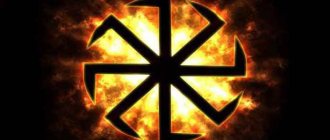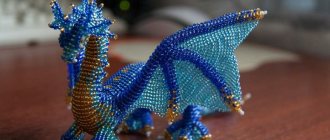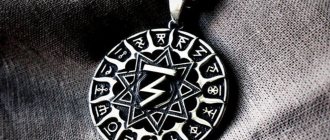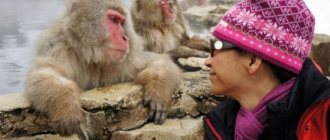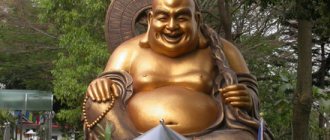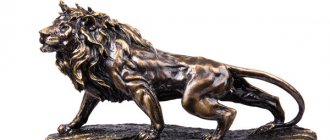Unicorn magic
The unicorn is a symbol of magic. His magical powers are also legendary. His horn is harder than the strongest diamond, and is capable of neutralizing poisons. And the tears of a unicorn can heal both physical wounds and sorrows of the heart. Some of them can fly and talk to all kinds of other living things. The magical unicorn is a symbol of freedom, healing and beauty. Powerful magic wands had unicorn hair at their core, and its blood could heal a person who was dying.
Instagram star
Social networks helped lure the magical creature into reality - the one-horned horse looks great both as an emoji and among rainbows on Instagram. And even in 2015, National Unicorn Day was established on April 9th.
“Unicorns” as a search term peaked in April 2017, the same time Starbucks introduced the Unicorn Frappuccino, kicking off the trend of adding glitter and rainbow colors to food and drinks.
Now unicorns are sold to children and adults in the form of images on cups and T-shirts, keychains and soft toys. Modern social networks like Instagram force us to show more beautiful, retouched versions of our lives - and the unicorn with its bio is a perfect symbol for this ideology.
What does the unicorn mean as a symbol?
The legendary white horse or pony with one horn is a symbol of purity and innocence in European mythology. Only a virgin could catch and tame him. What is the meaning of the symbol?
- Protection. The unicorn is the protector and patron of all virgins. Its horn has magical healing powers and was a popular ingredient in medieval medicines. It was a powerful antidote and protection from evil.
- Virtue. The white unicorn is a symbol of dignity, chastity and purity.
- Love and harmony. Unicorns are associated with the light of the moon, love, harmony and understanding. In medieval Europe, this gentle creature stood in opposition to the lion, which represented the more violent solar influence.
- Another meaning of the symbol is associated with courage, strength, and sometimes cruelty.
The meaning of tattoos for girls
For women, the unicorn is a special sign. This is a symbol of the fact that any unbridled force bows before a pure and innocent soul. Just as a horse obeyed the gaze of a meek girl. Therefore, a unicorn tattoo emphasizes the extraordinary inner strength of a fragile woman, the purity of her soul.
Girls like bright patterns. A unicorn, engulfed in flames or entwined with flowers, executed in rich, eye-catching shades, emphasizes spiritual and physical perfection.
A unicorn with wings has a different meaning. This is a beautiful creature that can stand up for itself and repel the enemy.
Unicorns in heraldry
The unicorn is also a prominent and significant figure in heraldic symbolism and is usually represented with a spiral horn of red, black or any other color.
The unicorn in 15th century heraldry is profiled with the tail of a lion and the hooves of a goat, symbolizing the breaking of the shackles of slavery. This was prompted by the sacred status of the unicorn in medieval times. Becoming more refined, it was associated with the attributes of Christ, the Holy Spirit and the Virgin Mary.
These solitary creatures personified the model of monastic life. The connection with the Holy Spirit made them a symbol of mysticism and spiritual values. In Scotland, two unicorns are depicted on the royal coat of arms; the British coat of arms displays a unicorn with a lion.
A hymn to chastity?
In the Middle Ages, this mysterious creature was glorified as a symbol of purity, nobility and knightly service to the Beautiful Lady. The European unicorn is a great connoisseur of female beauty. As the myths tell, it is precisely this weakness that hunters use when wanting to catch a beautiful animal. And this can only be done with the help of a beautiful, immaculate maiden. Attracted by her beauty (and some manuscripts also casually note that for greater effect the maiden should be naked), the unicorn falls asleep on the beauty’s lap. This is where the hunters manage to capture the fabulous animal. This legend existed in different variations in the Middle Ages in poetry, chivalric novels, and fine arts.
Stained glass windows and sculptures in medieval churches and cathedrals often depict scenes with the mythical unicorn. Perhaps medieval priests patronized the development of very piquant themes in art? Nothing happened! They simply interpreted the legend of the unicorn as the main gospel story. The fantastic unicorn appears as the incarnation of Christ, the horn signifies his connection with God the Father, as well as the life-giving cross. The Immaculate Virgin is, of course, a symbol of the Virgin Mary. This interpretation of the image of the unicorn runs not only through all theological treatises, but also through most medieval bestiaries - a collection of information about animals, which explains their symbolic meaning. Thus, the romantic legend gives way to another moralizing parable, which, it must be said, is very unsuccessfully combined with an ancient mythological plot.
Description of unicorns
One day, a fragment of a description of an unknown beast was found, made by Photias, Patriarch of Constantinople (circa 810-893 AD). He's writing:
“In India there are wild asses as large as horses, or even larger. Their body is white, their head is dark red, their eyes are bluish, and they have an elbow-length horn in their forehead. The lower part of the horn, at a distance of about two palms from the forehead, is completely white, the middle part is black, the upper part is fiery red. Those who drink from a cup made from it are resistant to convulsions, epilepsy and even poison, provided that before or after taking the poison they drank wine, water or other liquid from these cups. Their ankles are very beautiful. These animals are very strong and fast, neither a horse nor any other animal can overtake them.”
Login to the site
The unicorn is one of the very few mythological creatures that is considered beneficial in almost all traditions. In the modern understanding, it is simply a mysterious beautiful horse with one horn. The traditional unicorn is a symbol that is represented slightly differently: with a goat's beard, a lion's tail and cloven hooves.
History of the unicorn as a symbol
Unicorns occupy a place of honor in Greek mythology, Chinese traditions, and the art of the Indus Valley and India. Greek writers, including Pliny the Elder and Aristotle, mention them in their writings. There are at least eight mentions of the unicorn in the Old Testament of the Bible.
In the art of the Middle Ages, the unicorn is a symbol with religious meaning. According to legend, a beautiful maiden in the image of the Virgin Mary managed to catch this wondrous beast and tame it in such a way that the animal trustingly laid its head on her lap.
Here the unicorn is a symbol of reinvention, the incarnation of Christ, and his death was seen as the Passion of Christ. The pagan image of a horse with one horn became highly valued by the church.
Unicorn magic
The unicorn is a symbol of magic. His magical powers are also legendary. His horn is harder than the strongest diamond, and is capable of neutralizing poisons. And the tears of a unicorn can heal both physical wounds and sorrows of the heart. Some of them can fly and talk to all kinds of other living things. The magical unicorn is a symbol of freedom, healing and beauty. Powerful magic wands had unicorn hair at their core, and its blood could heal a person who was dying.
What does the unicorn mean as a symbol?
The legendary white horse or pony with one horn is a symbol of purity and innocence in European mythology. Only a virgin could catch and tame him. What is the meaning of the symbol?
- Protection. The unicorn is the protector and patron of all virgins. Its horn has magical healing powers and was a popular ingredient in medieval medicines. It was a powerful antidote and protection from evil.
- Virtue. The white unicorn is a symbol of dignity, chastity and purity.
- Love and harmony. Unicorns are associated with the light of the moon, love, harmony and understanding. In medieval Europe, this gentle creature stood in opposition to the lion, which represented the more violent solar influence.
- Another meaning of the symbol is associated with courage, strength, and sometimes cruelty.
Unicorns in heraldry
The unicorn is also a prominent and significant figure in heraldic symbolism and is usually represented with a spiral horn of red, black or any other color.
The unicorn in 15th century heraldry is profiled with the tail of a lion and the hooves of a goat, symbolizing the breaking of the shackles of slavery. This was prompted by the sacred status of the unicorn in medieval times. Becoming more refined, it was associated with the attributes of Christ, the Holy Spirit and the Virgin Mary.
These solitary creatures personified the model of monastic life. The connection with the Holy Spirit made them a symbol of mysticism and spiritual values. In Scotland, two unicorns are depicted on the royal coat of arms; the British coat of arms displays a unicorn with a lion.
Belief in unicorns
Of all the mythical and legendary creatures, from the scaly dragon to the cunning sphinx, the unicorn has always been the most beautiful and most beloved. At the same time fierce and proud, he was noble and kind. While many magical creatures foreshadowed danger, the unicorn usually brought good luck. For many centuries, Europeans believed in its existence, as if it were a real animal that lived in a foreign country, such as India, Persia or Abyssinia. There was an opinion that it was not a magical creature, but simply a sample of foreign zoology. At present, there is hardly a person who believes in their real existence.
Description of unicorns
One day, a fragment of a description of an unknown beast was found, made by Photias, Patriarch of Constantinople (circa 810-893 AD). He's writing:
“In India there are wild asses as large as horses, or even larger. Their body is white, their head is dark red, their eyes are bluish, and they have an elbow-length horn in their forehead. The lower part of the horn, at a distance of about two palms from the forehead, is completely white, the middle part is black, the upper part is fiery red. Those who drink from a cup made from it are resistant to convulsions, epilepsy and even poison, provided that before or after taking the poison they drank wine, water or other liquid from these cups. Their ankles are very beautiful. These animals are very strong and fast, neither a horse nor any other animal can overtake them.”
Female symbol
According to legend, the unicorn is a symbol for women. It was believed that only a chaste young virgin with pure thoughts could catch him. Often on ancient paintings and manuscripts one could see images of these noble animals along with beautiful young maidens.
Unicorn in Canada
Mostly any mention of unicorns is associated with China, India and Africa, as well as with gullible medieval Europe, which was characterized by belief in fairies, goblins and dragons. What do Canada and a unicorn have in common? Which country's symbol looks like a horse with one horn on its forehead? It is still located on the coats of arms of England and Scotland, and it also has its own legends associated with it.
As for North America, disproportionately horned creatures lived here during the time of dinosaurs, capable of piercing several other large animals with their horns. These include the suborder Ceratopsia (centrosaurs). These creatures looked like giant rhinoceroses, which were incredibly impulsive and cruel and belonged to the Cretaceous period. As is known, more than sixty-three million years separate the last dinosaurs from primitive man. However, early fossil finds were very helpful in fueling the idea that large fairy creatures such as dragons and unicorns once roamed the earth.
There are only two animals in nature that have one horn, the rhinoceros and the narwhal. The latter's tusk can reach 3 meters. It was truly a mythical sea horse with a horn. Found in Arctic seas, including the northern waters of Canada, the narwhal appears on a number of Canadian coats of arms. Animals, including bulls, deer, lions, griffins, unicorns - strong, fast and often ferocious - are a common practice in heraldry.
Unicorn as a national animal
Oddly enough, the official animal of Scotland is the unicorn. A fantasy character may seem like the wrong choice for a country's national animal, but that is not the case for a state that celebrates its love of a long history of myths and legends. Since the 12th century, the unicorn has been a Scottish heraldic symbol, appearing on an early form of William I's Scottish coat of arms.
Unicorns were worshiped by the ancient Babylonians, and written descriptions of them have been found in the texts of the ancient Persians, Romans, Greeks and ancient Jewish scholars. In Celtic mythology, the unicorn of Scotland symbolized innocence and purity, healing powers, joy and even life itself, and was also seen as a symbol of masculinity and strength. During the reign of King James III (1460-1488), gold coins were introduced depicting a mythical creature with one horn.
Unicorn today
People at all times have been fascinated by all kinds of monsters and mythical creatures. This fairy-tale character is still incredibly in demand and popular today. The image of a unicorn is found in films, literature, children's fairy tales, and comics. In souvenir shops you can buy a variety of figurines, jewelry, trinkets of all types and sizes.
Source
Unicorn in Canada?
Mostly any mention of unicorns is associated with China, India and Africa, as well as with gullible medieval Europe, which was characterized by belief in fairies, goblins and dragons. What do Canada and a unicorn have in common? Which country's symbol looks like a horse with one horn on its forehead? It is still located on the coats of arms of England and Scotland, and it also has its own legends associated with it.
As for North America, disproportionately horned creatures lived here during the time of dinosaurs, capable of piercing several other large animals with their horns. These include the suborder Ceratopsia (centrosaurs). These creatures looked like giant rhinoceroses, which were incredibly impulsive and cruel and belonged to the Cretaceous period. As is known, more than sixty-three million years separate the last dinosaurs from primitive man. However, early fossil finds were very helpful in fueling the idea that large fairy creatures such as dragons and unicorns once roamed the earth.
There are only two animals in nature that have one horn, the rhinoceros and the narwhal. The latter's tusk can reach 3 meters. It was truly a mythical sea horse with a horn. Found in Arctic seas, including the northern waters of Canada, the narwhal appears on a number of Canadian coats of arms. Animals, including bulls, deer, lions, griffins, unicorns - strong, fast and often ferocious - are a common practice in heraldry.
Erotic fantasy?
What is the origin of this mysterious image, and what is more in it - Christian symbolism or the outright eroticism of pagan cults? To answer this question, it is worth getting acquainted with other images close to the European unicorn.
First of all, this is the Chinese unicorn - Qi-lin, which, according to the beliefs of the ancient Chinese, descends from the sky. His appearance foreshadows the birth of a great and glorious man. They say that Qi-lin appeared to the mother of Confucius. In China, women kept images of Qi-lin in their chambers. This was supposed to bring glory to the unborn child or, at a minimum, ensure the birth of a boy and not a girl. The unicorn was often depicted next to the moon goddess Guanyin. As we see, the Chinese Qi-lin also did not disdain female society and, characteristically, was a harbinger of good for women in labor.
Qi-lin
Syrian sources mention a unicorn-like animal called "daya". It can also be caught only with the help of a maiden: the beast approaches her and sucks her naked breast. At this time, the girl grabs him by the horn - and Daya becomes the prey of the hunters.
Arab authors do not emphasize the obligatory virginity of the huntress. Any beautiful girl can catch a unicorn.
The legend of the unicorn is by no means only a European story and is not at all of Christian origin. Its origins should be sought, first of all, in fertility cults, characteristic of both European and Asian pagan traditions.
According to mythological beliefs, Mother Earth and Father Sky enter into a sacred marriage, from which all living things come. The annual imitation of this marriage was a spring cycle of rites designed to ensure the harvest. These rituals were openly erotic in nature. Their participants (often the ruler played the role of a male deity, and the priestess played the role of a female deity) performed a ritual sexual act, which symbolized the fertilization of the Earth with heavenly seed.
Unicorn. II millennium BC Relief from a seal from Mohenjo-Daro
Sacred figurines depicting the male reproductive organ had an important sacred meaning in these rituals. Such cult phallic symbols have been discovered in large numbers by archaeologists throughout Eurasia. Some of them contain an image of the world tree. According to researchers, animal horns could also carry similar symbolism. The horn in pagan tradition was also a symbol of supreme power.
Delving deeper into pagan tradition, it can be assumed that the roots of the image of the unicorn most likely lie in ancient fertility cults. The animal itself could symbolize the god of fertility or his earthly incarnation - the king-priest. The phrase in ancient manuscripts where “the unicorn comes and lies down on the virgin’s bosom” can be interpreted as a description of ritual sexual intercourse. It should be noted that the plot of hunting a unicorn and killing it also has archaic roots. In many mythological traditions, there is a story about the death and subsequent resurrection of the god of fertility (for example, the Egyptian Osiris). The blood of God, spilled on the earth, ensures the future harvest. Such stories are close to the ancient mysteries dedicated to the god Dionysus.
Unicorn as a national animal
Oddly enough, the official animal of Scotland is the unicorn. A fantasy character may seem like the wrong choice for a country's national animal, but that is not the case for a state that celebrates its love of a long history of myths and legends. Since the 12th century, the unicorn has been a Scottish heraldic symbol, appearing on an early form of William I's Scottish coat of arms.
Unicorns were worshiped by the ancient Babylonians, and written descriptions of them have been found in the texts of the ancient Persians, Romans, Greeks and ancient Jewish scholars. In Celtic mythology, the unicorn of Scotland symbolized innocence and purity, healing powers, joy and even life itself, and was also seen as a symbol of masculinity and strength. During the reign of King James III (1460-1488), gold coins were introduced depicting a mythical creature with one horn.
The meaning of tattoos for men
Unicorn tattoos are also popular among men. The mythical creature carries strength and power, which appeals to brutal guys. The tattoo serves as a talisman, protects against enemies and helps in difficult situations.
The animal's horn symbolizes autocracy, so the image is often painted by powerful and strong people, leaders from birth.
Men can see tattoos of a horse with wings. This is Pegasus, which appeared from the union of Medusa the Gorgon and Poseidon. It brings inspiration, freedom and purpose. Pegasus is strong and determined because he brought lightning and thunder to Zeus on Olympus. If a guy has a unicorn tattoo on his body, he is brave and independent, has clear life goals.
What should the symbol be?
If you want to use a unicorn figurine as a talisman, keep in mind that not just any figurine is suitable for this purpose. A children's toy unicorn made of fabric, fur, plastic or rubber will never become a mascot. Wooden, porcelain, plaster and ceramic figurines are not suitable for the role of talismans, even if they are very beautiful, cute and have a downright “magical” appearance. Even the most expensive unicorns made of gold and silver will forever remain only products made of precious metals.
According to Feng Shui, the Unicorn, which will serve as a talisman, should be made of semi-precious stone: jasper, carnelian, agate, amethyst, rose quartz. The most powerful talismans are made from milky white cacholong, because the color of this stone repeats the color of a unicorn. A talisman made from transparent rock crystal will work perfectly, as this stone has strong protective properties.
However, there is one catch - unicorns made of semi-precious stones are no more common on sale than live white horses with a horn in their forehead. This rarity further increases the value of the talisman. If you are lucky enough to see such an exclusive product on the counter of a jewelry or souvenir store, this means that the talisman itself found you. In this case, buy a figurine - it will bring a lot of benefits, protecting the house and the people living in it from evil spells.
How to activate the amulet?
In order for a decorative figurine to turn from a simple decoration into a real amulet, it is necessary to carry out a special ritual to activate its protective properties.
The figurine should be placed in a prominent place in the living room, and next to it should be placed images of various female mythical creatures, such as mermaids or fairies. Near the resulting composition you need to place several indoor plants in pots. A fern flower placed nearby can have a particularly beneficial effect on the figure of a unicorn.
Did you like the article? Recommend her to your friends!
Source
